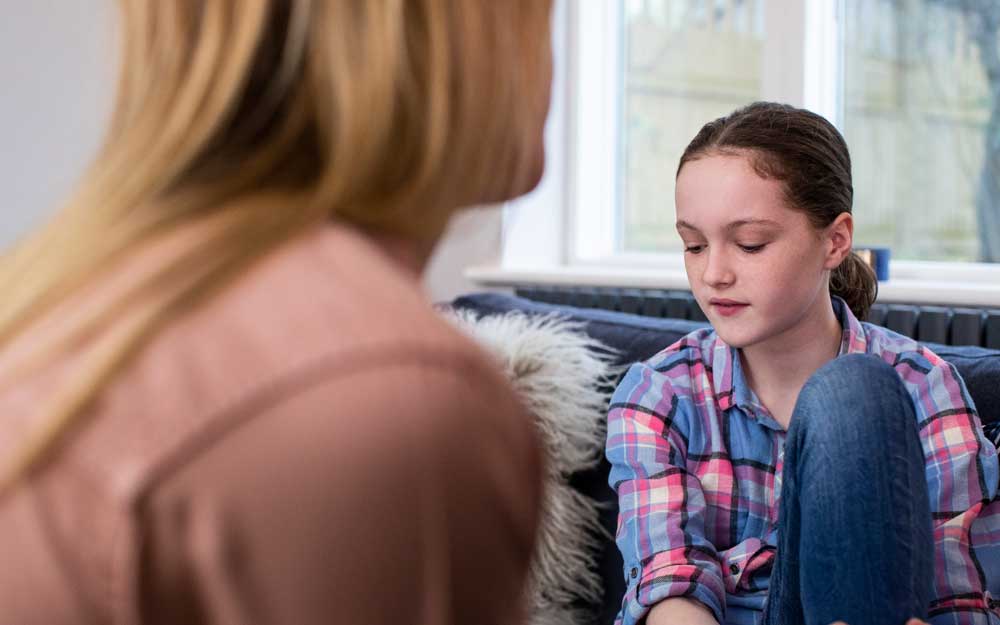It’s estimated one in eight children ages 17 or younger are living in households with at least one parent who has a substance use disorder (SUD). Studies reveal the impact on children:
- They have more difficulties in academic, social, and family functioning when compared with children of parents who do not have an SUD.
- They’re more likely to have higher rates of mental and behavioral disorders.
- They’re more likely to develop SUD symptoms themselves.
“If a parent or caregiver comes home and they’re intoxicated and emotionally dysregulated, that’s chaotic for anyone, particularly children,” says Sean LeNoue, MD, associate medical director, Outpatient Services, and psychiatrist at Rogers Behavioral Health in Nashville. “It’s very discombobulating and can shift the perspective of what’s normal and acceptable,” he explains.
Factors that can influence substance use in youth
Dr. LeNoue says three major factors can influence substance use in youth — normalization of use, perceived risk associated with substance use, and access to substances.
“If it was normal for a parent or caregiver to come home and drink a 12-pack, if a child perceives the risk or consequences for using substances as low, and if they see substances are easily accessible, unfortunately, that’s the recipe to influence youth to use substances,” Dr. LeNoue explains. “Genetics and family history can also predispose a person to develop a substance use disorder,” he adds.
Beside the risk of substance use, children who live with a parent who has an SUD may have mental health challenges like anxiety, depression, and trauma.
“What we don’t talk about as much is the impact on a child’s self-esteem,” says Dr. LeNoue. “In a chaotic home environment, it’s hard to get your homework done. If you’re a 12-year-old who doesn’t necessarily want to get your homework done and there isn’t an adult guiding, helping, and nurturing, the child may fall behind in school. That’s where you may start to see behavior like decreasing engagement with academic, athletic, or other pro-social outlets. It can be a cascading effect,” he adds.
Signs to watch for in youth
Dr. LeNoue says parents, teachers and other people like coaches who know the child may need to be concerned if they notice sustained changes and trends.
“If the child used to be happy-go-lucky, vibrant, engaged, and motivated, and suddenly they’re not showing up for class, they’re looking tired and they’re withdrawing, that warrants a conversation,” says Dr. LeNoue. “It’s important to be supportive, compassionate, and non-judgmental,” he adds.
How Rogers helps the family
Rogers team of experts focus on helping the patient reach and set goals for maintaining recovery while also addressing any family issues.
“Evidence shows you need to involve other people who are important to the patient. If we’re going to heal the individual, we must be mindful of healing the family unit as well,” says Dr. LeNoue. “We work to build systems of support and strive to build transparency, accountability, and trust,” he says.
If you or a loved one are struggling with addiction, call 800-767-4411 for a free, confidential screening. You can also request a screening online.
For more information about reducing the risk of teen addiction, check out our podcast series.


